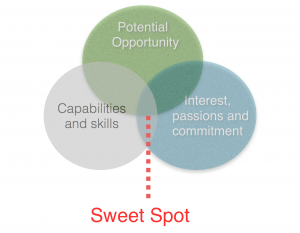Take out of a paper and answer the questions in blackboard.
( If you have a opportunity to do anything which you are guaranteed totally.)
- What problem would you solve?
- What experience/ thing would you save?
- What newest thing/ experience would you create?
Answers from classmates:
First one
A: Education system in Russian since they are not sufficient in money and can not afford much of scholarship for students to go out for a further study.
Second one
A: Shortage of money. Change the system of water and electricity such as do not charge anything. He will save as much as books as I can and I want to create a kind of learning program since we spend a lot of time in learning.
Third one
A: A short story: in Pakistan there are three regions and there is nothing differences between them but one of my children friends was killed when he pursed his further study in USA since he his a Pakistan. So I want to solve peace and residence problem. I want create a social media network but I did not have enough knowledge in different cultures and regions by using my background education.
Forth one
A: Suicide since some regions lack of water and they choose to suicide. The question i want to solve is how to save water in farm fields and how to support famers.
Firth one
A: Create something can understand what people’s feelings.
Sixth one
A: Earthquakes problems. Crate something can forecast earthquakes by weather since I live in Chile and the frequencies of earthquakes are very high. By inventing it, people can escape from dangerous situations.
Four videos part.
Six parts of Introduction to Technology and Entrepreneurship
1. Overview
2. Technology entrepreneur
3. Risk and reward
4. Renewal of economy and industries
5. Characteristics of technology intensive business
6. Process from idea to business and market.
Overview to Technology Entrepreneurship
Technology, firms and innovations
- Technology encompasses new methods, processes, artefacts, tools and devices that can be used in commercials and industrial use.
- New technologies from basis for technology firms where entrepreneurs create innovations by combining their technological know- how with business practices.
- These technology firms create new commercialized solutions.
Identifying an attractive opportunity

Capabilities of successful entrepreneur
- A combination of talent, genuine interest and knowledge of the targeted industry.
- Creative, achievement-oriented, self-efficient and eager to commit into solving a problem.
- Fast decision making capability
- Capable of deciding right strategic actions
- Ability to work in the conditions of risk and uncertainty
- Capability flexibly adapt to changing internal and external conditions.
Question:
What kinds of qualities should an entrepreneur have?
- Ability to manage failure. they are not afraid of being failed.
- Creative.
- Experiences. they will come up some great ideas.
and so on.
Discussion: Why you are here? What is your position in this class?
- Entrepreneur; /5
- It is attractive and exhibit in my study plan; /36
- I have to be here. /29
Discussion part
Advantages of being an entrepreneur :
- master of your time;
- independent;
- Improvement
- solve a problem
- relaxed
- driven by vision not money
- create opportunity for others
- challenge yourself
- create more things
- dynamic lifestyle
- more money
- make a decision quickly
- choose a team
- Flexible lifestyle
- Adaptable
- ambitious
- Recognition
- Impact
Why not?
- Facing risks/ too risky
- carrying responsibility
- Scary/ risking all
- time consuming / less free time
- lack of motivation
- Stressful / not healthy
- Financial investment
- “not” attitude /negativity
- bad environment/ cultural/ social
- Exhausting
- “ not your DNA”
- work with whoever (customer)
- lack of support
- family and mentality
- Unrealistic
- can not deal with failures
- Compromise
- Commitment
- indecisiveness
- no plan b
- no guaranteed
- Uncertainty